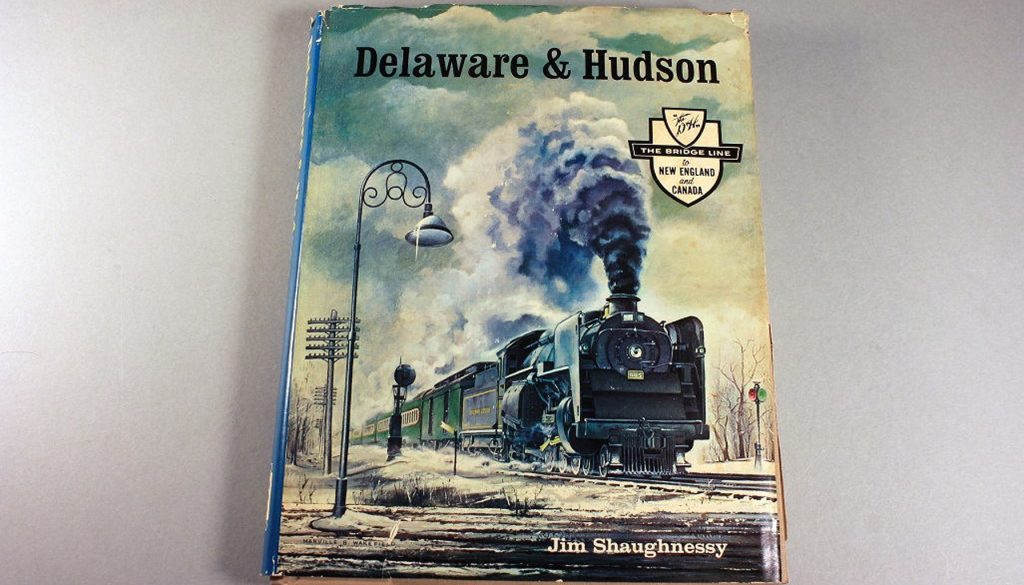The transformation of the Delaware & Hudson Canal Company into the Delaware & Hudson Railroad is a compelling story of industrial evolution, reflecting the shift from water-based to rail-based transportation in the 19th century. This transformation was driven by technological advances, economic pressures, and the changing landscape of American industry.
Origins of the Delaware & Hudson Canal Company
The Delaware & Hudson Canal Company (D&H) was established in 1823, primarily to transport anthracite coal from the mines of northeastern Pennsylvania to markets in New York City and other parts of the Northeast. Coal was becoming a critical fuel source, and the company aimed to link the rich coal deposits near Carbondale, Pennsylvania, with the Hudson River, where coal could be shipped to urban markets.
The company constructed the Delaware & Hudson Canal, a 108-mile waterway running from Honesdale, Pennsylvania, to Rondout, New York, on the Hudson River. Opened in 1828, the canal was a monumental engineering feat for its time. It included 108 locks to manage elevation changes, aqueducts to cross rivers, and a gravity-powered inclined plane railway to transport coal from the mines to the canal. The canal was a commercial success, significantly reducing transportation costs and fueling the industrial growth of the region. As a result, the D&H recognized the need to adapt or risk obsolescence.
The Transition to Railroads
The company took its first steps toward railroads in the 1820s, even before the canal was completed. The Delaware & Hudson Gravity Railroad was established in 1829 to transport coal from Carbondale to Honesdale, where it could be loaded onto canal boats. This early railroad was gravity-powered, with loaded cars descending by gravity and empty cars being hauled back up by stationary steam engines. Though rudimentary, the gravity railroad was an important precursor to modern rail systems.
As rail technology improved, the D&H began to invest more heavily in railroad infrastructure. By the 1860s, it became clear that railroads were the future of transportation. The company began acquiring and constructing rail lines to complement and eventually replace the canal. The transition was gradual, as the company sought to leverage its existing canal assets while building its rail network.
The Rise of the Delaware & Hudson Railroad
In 1869, the Delaware & Hudson Canal Company formally reorganized as the Delaware & Hudson Railroad. This marked the culmination of its transformation from a canal operator to a fully-fledged railroad company. The shift was not just a change in name but a reflection of the company’s new focus on rail transportation as its primary business.
The newly minted Delaware & Hudson Railroad expanded its network through acquisitions and construction. It purchased the Albany & Susquehanna Railroad, gaining access to markets in Albany and Schenectady, New York, and established connections with other major railroads. Over the next several decades, the D&H continued to grow, eventually operating a network stretching from Pennsylvania to Montreal, Canada.
Strategic Advantages of the Railroad
The D&H Railroad benefited from several strategic advantages. Based on its legacy of coal production, the railroad maintained control over coal production, transportation, and distribution. This allowed it to maximize profits and compete effectively with other coal carriers. Additionally, the D&H Railroad connected major industrial and urban centers in the Northeast and Canada, providing access to lucrative markets. This allowed the company to diversify its freight traffic beyond coal, transporting agricultural products, manufactured goods, and passengers. As the railroad grew, the Delaware & Hudson Canal became increasingly obsolete. By the 1890s, railroads had largely supplanted canals for freight transportation. The D&H Canal ceased operations in 1898, marking the end of an era. The company sold off the canal’s assets and focused entirely on its railroad operations.
Expansion and Consolidation: Delaware & Hudson Railroad in the Mid to Late 1800s
The mid to late 19th century was a transformative period for the Delaware & Hudson Railroad (D&H), marked by expansion, technological advancement, and strategic decisions that solidified its position as a major player in the transportation industry. This period witnessed the transition from reliance on the Delaware & Hudson Canal to a fully developed and strategically connected rail network, catering to the needs of an industrializing America.
The Civil War (1861–1865) served as a critical turning point. The demand for coal surged, and railroads proved indispensable in transporting supplies for wartime production. Recognizing this trend, the D&H invested heavily in rail expansion, ensuring it could capitalize on the post-war industrial boom.
Expansion Through Acquisitions
In the late 19th century, the D&H embarked on a period of aggressive expansion, acquiring smaller railroads to broaden its network and secure access to critical markets. Key acquisitions during this period included:
1. Albany & Susquehanna Railroad (1869): One of the most important acquisitions, this line connected Binghamton, New York, to Albany, providing the D&H access to the state capital and major markets in the Hudson Valley. The acquisition faced legal and political challenges, including a heated battle with financier Jay Gould, but the D&H ultimately prevailed, solidifying its presence in eastern New York.
2. Saratoga & Hudson River Railroad (1881): This line extended the D&H’s reach into tourist-friendly destinations in upstate New York, including Saratoga Springs. While primarily a freight carrier, the D&H recognized the profitability of passenger traffic, especially to leisure destinations.
3. Pennsylvania Rail Connections: Expanding further into Pennsylvania allowed the D&H to secure more anthracite coal traffic, strengthening its foothold in the coal industry.
Technological Innovations
The mid to late 19th century saw significant technological advances in railroads, and the D&H was an early adopter of many innovations. Locomotive Improvements topped the list as the D&H upgraded its locomotive fleet, adopting more powerful steam engines capable of hauling larger loads over longer distances. These advancements were critical for maintaining competitiveness in the coal transportation market.
During the 19th century, railroads across the U.S. transitioned to a standardized gauge (4 feet 8.5 inches). The D&H was part of this movement, ensuring seamless connectivity with other railroads. As well as standardization, the D&H adopted the use of steel rails, replacing iron rails with steel allowed for heavier and faster trains, improving efficiency and reducing maintenance costs.
Given the topography of northeastern Pennsylvania and upstate New York, the D&H invested in engineering projects to overcome geographic barriers. Notable projects included the construction of bridges over the Hudson and Mohawk Rivers and tunnels through mountainous terrain in Pennsylvania and New York.
Diversification Beyond Coal
While coal remained the backbone of the D&H’s business during this time period, the company diversified its freight operations during the late 19th century. The railroad began transporting agricultural products, timber, and manufactured goods, capitalizing on the industrialization of the Northeast.
Passenger service also became an important component of the D&H’s operations. With the rise of tourism in the Adirondacks and Saratoga Springs, the railroad provided connections to popular vacation destinations, marketing itself as a key link between urban centers and scenic retreats.
Competition and Strategic Alliances
The rapid expansion of railroads in the Northeast created a highly competitive environment. The D&H faced challenges from larger railroads like the Pennsylvania Railroad and the New York Central Railroad, both of which operated extensive networks in overlapping territories.
To maintain its competitive edge, the D&H formed strategic alliances with other railroads, enabling it to extend its reach into Canada and the Midwest. Partnerships with Canadian railroads, including the Grand Trunk Railway, facilitated access to Montreal and other Canadian markets, making the D&H a critical link in the international coal and freight trade.
Economic and Social Impact
By the late 19th century, the D&H had established itself as a cornerstone of the Northeastern economy. Its rail network supported the coal industry, which in turn powered factories, steamships, and homes across the region. The railroad also contributed to the growth of cities and towns along its routes, providing jobs and connecting communities to larger markets.
The D&H’s commitment to infrastructure development and technological innovation set an example for other railroads. Its transition from a canal-based operation to a modern railroad demonstrated the adaptability required to thrive in a rapidly changing economic landscape.
Challenges in the Late 1800s
While the D&H achieved significant success, it also faced challenges in the late 19th century. As it was for all railroads, the Panic of 1873 and subsequent economic depressions disrupted freight traffic and strained the company’s finances. Also like many railroads of the era, the D&H faced labor disputes, including strikes by workers demanding better wages and working conditions. In addition, the Interstate Commerce Act of 1887 introduced federal oversight of railroad rates and practices, limiting the ability of companies like the D&H to engage in monopolistic pricing.
Legacy and Impact
The transformation of the Delaware & Hudson Canal Company into the Delaware & Hudson Railroad reflects broader trends in 19th-century American transportation and industry. It exemplifies the shift from water-based to rail-based systems, driven by technological innovation and the demands of a rapidly industrializing economy.
The D&H Railroad played a significant role in the economic development of the northeastern United States. It facilitated the movement of coal, which powered factories, heated homes, and fueled steamships. It also helped connect rural areas with urban markets, promoting regional economic integration.
The mid to late 1800s were a transformative era for the Delaware & Hudson Railroad. By leveraging strategic acquisitions, technological innovation, and diversification, the D&H evolved from a canal-dependent company to a major railroad operator. Its ability to adapt to changing market conditions and embrace the opportunities of the industrial age ensured its survival and success in one of the most dynamic periods of American transportation history.
The Delaware & Hudson Railroad entered the 20th century as a symbol of industrial progress, a regional powerhouse that had effectively navigated the challenges of a rapidly evolving economy.

